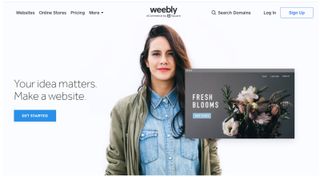This article first appeared in issue 231 of .net magazine – the world's best-selling magazine for web designers and developers.
.net: What’s the essence of a great online community?
JB: Communities tend to vary based upon their focus. An online community in a bank will differ in culture, organisation and momentum to an online BBQ community or something such as Wikipedia. It’s always important to tune the structure, governance, and outreach of the community to these implicitly cultural factors that are unique to these different environments. There is something which, I think, spans all communities; we want to build a strong sense of ‘belonging’.
Communities are dynamic places: people come and go, and we spend time and energy trying to get new contributors up to speed, only for some of them to disappear after a few weeks. We ideally want contributors who provide significant and sustained contributions, and to get people to stick around we need to make them feel like they belong and feel part of something. We do this by creating awesome teams, giving people a sense of potential which can build influence, and providing a fun and rewarding environment.
.net: What should be at the forefront of your mind when you’re looking to build a community?
JB: You can segment all communities into two broad types: communities that consume together (eg Star Wars fans), I call these ‘read’ communities; and communities that collaborate to create something (eg software projects), I call these ‘write’ communities.
‘Read’ communities need to focus on clear and simple communication channels and building a fun, entertaining and rewarding environment. The factor here that builds belonging is enjoyable participation and discussion.
‘Write’ communities need to build a collaborative environment that is focused on people getting things done, with a low barrier to entry, and feeling great about their contributions. For example, a developer who gets his/her branch landed in a software project will feel great and motivated to continue further improvements.
.net: What are the main pitfalls to look out for?
JB: I think the primary pitfalls are the inverse of the goals I outlined in the previous question. In a nutshell, communities prosper, grow, and flourish when people feel empowered by the wider group.
In ‘read’ communities you feel empowered by a wider support network of people who share your interest. In ‘write’ communities you feel empowered by being able to contribute something that benefits everyone. Anything that challenges this empowerment can be destructive, be it slow and bureaucratic processes, rude and disrespectful people, or other frustration points.
.net: Tell us about some of your favourite insights from the people you’ve interviewed for The Art of Community ...
JB: I love the diversity of experience from the different interviews that were included. As an example, Linus Torvalds (creator of Linux) knows how to run a tight ship with strong focus and direction, and Mike Shinoda (from Linkin Park) knows how to make his fans feel close to the band. The wider insight that I took from interviewing all of these folks was that they all grow community in different ways, but the core goals are the same: committed, faithful, reliable community members who love being part of the wider community.
.net: How do you go about promoting a mature, supportive culture and stamping out bullying?
JB: This can be tough sometimes. Online communities are a mix of different cultures, different graduations of social skills and different levels of humour and tolerance. The focus here should be promoting a culture of tolerance, polite debate and open contribution, but not tolerating disrespect and aggressive behaviour.
Unfortunately some communities swing the pendulum too far in either direction; chastising anyone who demonstrates anti-social skills (which can often be a cultural or experience mismatch) or never confronting aggressive or rude behaviour. Neither approach is the right one, in my opinion.
I recommend that people put together a Code Of Conduct, and encourage the leaders of the community to lead by example; be polite, respectful, engage in mature debate and be professional in their conduct. The skill here is spotting when challenging community members can be ‘trained’ into being more collaborative as opposed to flicking the switch on them.




